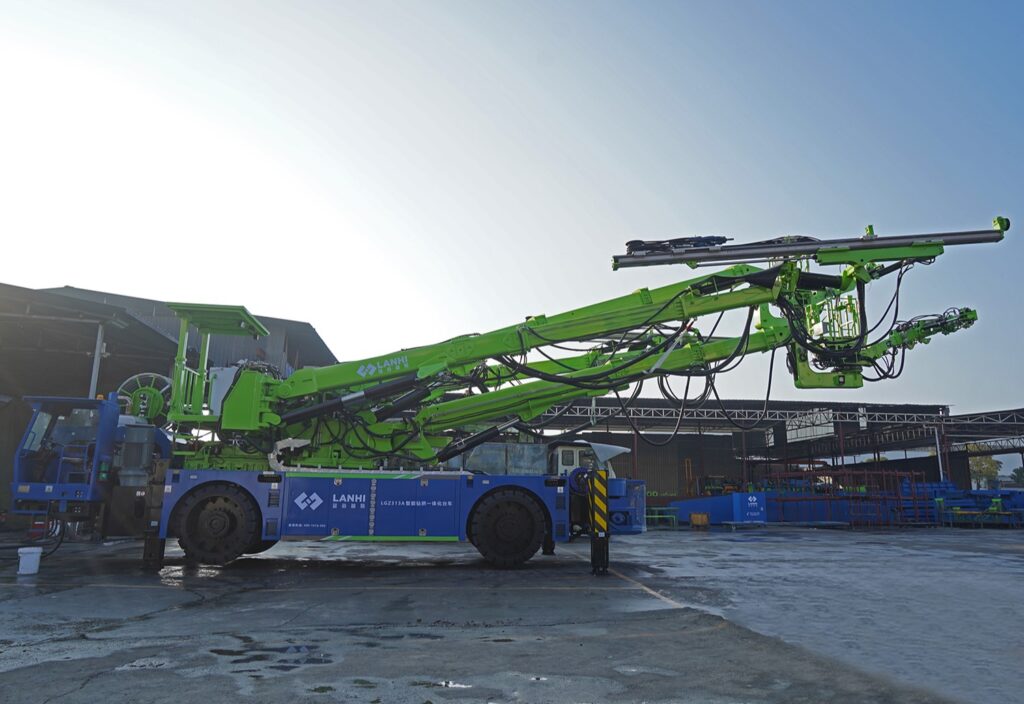What is a drilling jumbo? A drilling jumbo, often referred to simply as a jumbo, is a large piece of machinery used in the mining and construction industries for the purpose of drilling holes into rock. The term "jumbo" typically refers to a specific type of drill rig that can be moved around on tracks or wheels, making it highly versatile for use in underground mines and tunnels where mobility is crucial.

Drilling jumbos are equipped with powerful drills capable of creating holes up to several inches in diameter at depths required by various mining operations. These machines usually have multiple drill arms which can operate simultaneously, increasing efficiency. They also incorporate features such as dust suppression systems to maintain air quality within confined spaces.
The operator's cabin is often situated high above the drill area to provide a clear view of the work being done. Modern jumbos may include advanced technologies like automation, GPS positioning, and computer-controlled drilling systems to improve accuracy and reduce human error.
How does a drilling jumbo work?
A drilling jumbo, widely utilized in the mining and tunneling sectors, operates through a series of coordinated components designed to efficiently create holes in hard rock surfaces. Here’s a breakdown of how these impressive machines function:
Setup: Before drilling begins, the jumbo must be positioned accurately over the designated drill site. This is achieved using its hydraulic legs or wheels to stabilize and adjust its height and orientation. Modern jumbos might employ laser guidance systems or GPS technology for precision setup.
Hydraulic System: The heart of any jumbo is its hydraulic system, which powers most of the machine’s functions including the movement of the drill arms, rotation of the drill bits, and the application of pressure against the rock surface during drilling. Hydraulic fluid is pressurized and directed through hoses to various actuators and motors.
Drill Arms and Bits: Jumbos feature one or more drill arms (usually two or three) that can be extended outward towards the working face. Each arm holds a drill bit—a hardened steel tool tipped with carbide or diamond-impregnated segments depending on the hardness of the rock. When activated, the drill bit rotates while applying downward force provided by the hydraulic system, effectively chiseling through the rock.
Dust Suppression: To manage the dust created during drilling and protect both the equipment and operators, jumbos utilize water jets or air blowers. Water is injected near the drill bit to wet the dust particles, making them heavier and less likely to become airborne. Alternatively, reverse air flow can be employed to extract dust directly away from the drill site.
Automation and Controls: Many modern jumbos come equipped with advanced control systems that allow for semi-autonomous operation. Operators sit inside a cab, controlling the machine via joysticks and monitors. Some newer models even offer remote operation capabilities, further enhancing safety by keeping personnel away from hazardous environments.
Transportation: After completing a section of drilling, the jumbo needs to move to another location. It can do so autonomously if equipped with wheels or tracks, or it might require assistance from auxiliary vehicles in tighter spaces.
By integrating these components and functionalities, drilling jumbos are able to perform their tasks with remarkable speed and precision, making them indispensable tools in the field of mineral exploration and infrastructure development.




